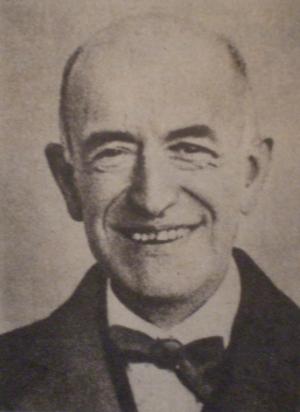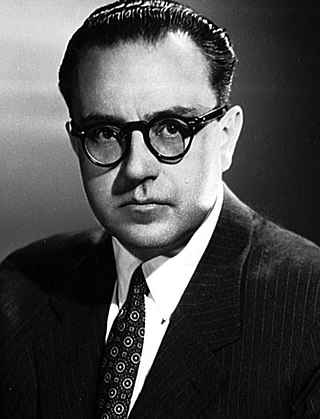
Manuel de Falla y Matheu was a Spanish composer and pianist. Along with Isaac Albéniz, Francisco Tárrega, and Enrique Granados, he was one of Spain's most important musicians of the first half of the 20th century. He has a claim to being Spain's greatest composer of the 20th century, although the number of pieces he composed was relatively modest.

Alberto Evaristo Ginastera was an Argentine composer of classical music. He is considered to be one of the most important 20th-century classical composers of the Americas.

Encarnación López Júlvez, known as La Argentinita, was a Spanish-Argentine flamenco dancer (bailaora), choreographer and singer. La Argentinita was considered the highest expression of this art form during that time.
Will-o'-the-wisp is the light phenomenon traditionally ascribed to ghosts.

The Three-Cornered Hat is a ballet choreographed by Léonide Massine to music by Manuel de Falla. It was commissioned by Sergei Diaghilev and premiered in 1919. It is not only a ballet with Spanish setting but one that also employs the techniques of Spanish dance instead of classical ballet.

El amor brujo or Carlos Saura Dance Trilogy, Part 3: El Amor Brujo is a 1986 Spanish musical film written and directed by Carlos Saura. It was directed and choreographed in the flamenco style by Maria Pagès. It is the third part of the Saura's flamenco trilogy he made in the 1980s, after Bodas de sangre in 1981 and Carmen in 1983. The film was screened out of competition at the 1986 Cannes Film Festival.
Bewitched Love is a 1967 Spanish drama film directed by Francisco Rovira Beleta and based on the eponymous ballet by Manuel de Falla. It was nominated for the Academy Award for Best Foreign Language Film. It was also entered into the 5th Moscow International Film Festival.
María Benítez is an American dancer, choreographer and director in Spanish dance and flamenco. Born of a mother of Chippewa, Algonquian, Oneida and Iroquois parentage and a Puerto Rican father, Benítez is best known for the work of the company she and her husband Cecilio founded and direct, Teatro Flamenco.

Honeymoon, also shown as The Lovers of Teruel in the United States, is a 1959 film by the British director-writer Michael Powell based in part on the ballet El Amor Brujo by Manuel de Falla. The film stars Anthony Steel, Ludmilla Tchérina and Spanish ballet dancer Antonio, and features Léonide Massine.

Nancy Fabiola Herrera is a Canarian mezzo-soprano opera singer. Born in Venezuela to Canarian parents, Herrera is the recipient of the "Best Zarzuela Singer of 2007" award presented by the Fundación Premios Liricos Teatro Campoamor, for her performance in Ruperto Chapí's La Bruja.

Ritual Fire Dance is a movement of the ballet El amor brujo, written by the Spanish composer Manuel de Falla in 1915. It was made popular by the composer's own piano arrangement. The dance has a duration of about three to four and a half minutes.

Paco de Lucía interpreta a Manuel de Falla is the twelfth studio album by the Spanish composer and guitarist Paco de Lucía. All the pieces were written by Manuel de Falla.

Ancestral Romance is the eighth full-length album by the Spanish power metal band Dark Moor, released on 24 November 2010.

Siete canciones populares españolas is a 1914 set of traditional Spanish songs arranged for soprano and piano by the composer Manuel de Falla. Besides being Falla's most-arranged composition and one of his most popular, it is one of the most frequently performed sets of Spanish-language art songs.

Caballos de vapor, sinfonía de baile is a ballet score composed by the Mexican composer Carlos Chávez in 1926–32. An abridged concert version is published as Suite sinfónica del ballet Caballos de vapor.
Dance of fire may refer to:

The Three-Cornered Hat is a 42-minute classical studio album in which the Pittsburgh Symphony Orchestra under André Previn perform the whole of Manuel de Falla's ballet The Three-Cornered Hat and, as a filler, the Ritual Fire Dance from his ballet Love the Magician. The longer work's two brief vocal passages are sung by the American mezzo-soprano Frederica von Stade. The album was released in 1983.
The National Ballet of Uruguay is a Uruguayan ballet company that was founded in 1935 in Montevideo. It is the public body in charge of developing the professional classical ballet in Uruguay, it is under the administration of the Official Service of Broadcasting, Television and Entertainment (SODRE).
Merche Esmeralda is a Spanish flamenco dancer (bailaora) and choreographer. In 2007, she was the recipient of the Fundación Cruzcampo "Compás del Cante" Award; this award is always referred to by the Spanish media as the "Flamenco Nobel prize".











